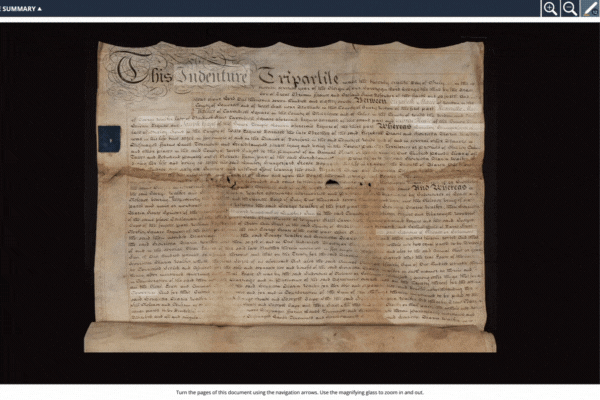Why would an English chemist donate his fortune to the United States, a newly formed country he had never visited? We will likely never know exactly why in 1826 James Smithson chose to bequeath more than half a million dollars to create the Smithsonian Institution. But the Hungerford Deed, a real estate contract between Smithson’s mother, Elizabeth Macie, and his aunt, Henrietta Maria Walker, reveals a family obsession with legacy that shaped Smithson as a person—and the birth of the future Smithsonian.

At first glance, the Deed appears to be no more than it looks on the surface: an eighteenth-century English property agreement dividing inherited lands. It also predates the Smithsonian’s founding by nearly 70 years. So why does the Deed matter today?
The Hungerford Deed tells the captivating story of two sisters fighting for their place in the world. Both women were desperate to reclaim the lost land legacy of their wealthy ancestors, the medieval Hungerfords. Their obsession with that history and their fiery conflict with each other over the division of these family lands shaped the course of James Smithson’s life. Their story, a passionate pursuit of legacy told through the Deed, becomes his story.
The Deed also offers clues to the origins of Smithson’s fortune. Historically we have thought that his money came through the aristocratic Hungerford connection of his mother, who inherited half of the properties listed in the Deed. Records make it clear, though, that his mother’s money was one source, but not the only or most important source, of his wealth.
Join us as we explore the Hungerford Deed. Dive deep into the lives of these sisters as they come into their inheritance and navigate claiming their legacy while husbands and lawyers look on. Unpack the ins and outs of owning and inheriting land in eighteenth-century England, and explore the places, institutions, and people named within the Deed.
Come and turn the pages of Smithsonian history with us.
____________________________________
A Tale of Two Sisters: The Hungerford Deed and James Smithson's Legacy was curated by William Bennett. Emily Niekrasz was the project manager. Hannah Byrne, Heather Ewing, Pamela M. Henson, and Jessica Scott offered invaluable feedback and input. Riccardo Ferrante, Kira Sobers, and Andrew Whitesell provided the technical support for this exhibit. Interactive Knowledge designed the page viewer. Special thanks to all of the Smithsonian Archives staff for their support on this project, especially chief archivist Tammy Peters, the Hungerford Deed’s #1 fan. Financial support for the exhibit came from the Smithsonian 175th Committee.
_____________________________________
Additional support for the Smithsonian Libraries and Archives was provided by the Stewards of the Hungerford Deed.
Hungerford Steward
Nick and Nancy Hungerford
The Misener Foundation
Smithson Steward
Mary and Clinton Gilliland
Macie Steward
Anonymous, Marguerite M. Florio and Nicholas M. Florio, Ingrid Rose in memory of Milton Rose, Ruth O. Selig, and Jacqueline Vossler
Walker Steward
Susan Holden Blaha, Riccardo Ferrante, Herbert and Joan Gilder, Sally and Stephen Maran, Linda and Peter Rapp, and Richard Renner
Keate Steward
Keith and Kathy Boi, Caxton Club, Jennifer Gerken, John Lapiana, Mercantile Library, Jim and Mary Neal, William Nichols, Newberry Library, Asad Quasem, Vicky Rhodes, Tim and Patricia Schantz, Dr. Chuck Sexton, Eliza A. White, and Cheryl Ziegler
Steward
Anonymous (4), Katherine Barnash, Susan Burnet, Marilyn Courtney, Danielle Davis, Carol Edwards, Barbara Ferry, Deborah J. Leslie, Laura Peebles, Clarice Peters, Joan Marie Peters, Julie Ross, Diane Shaw, Cynthia Soltes, Joanne Troutner, Kay Tuttle and Rick Hancock, and Helena Wright
